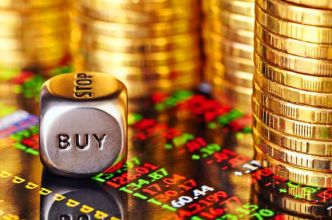Bryan Armour: The S&P 500 has led the market this year, leaving other fund strategies behind as the biggest US companies grew bigger. While we look favorably on the S&P 500’s long-term prospects, market-leading performance won’t always be the case. Morningstar Categories go through periods of strength and weakness, and strategies within those categories do as well.
Investors benefit from taking a long view rather than anchoring to recent performance. These three ETFs have all struggled in 2024, but more promising performance is on the horizon.
3 Great ETFs Having a Lousy 2024
1 – SPDR MSCI EAFE StrategicFactors ETF QEFA
2 – iShares Core U.S. Aggregate Bond ETF AGG
3 – Schwab U.S. Dividend Equity ETF SCHD
First on my list is Silver-rated SPDR MSCI EAFE StrategicFactors ETF, ticker QEFA. This ETF pulls in foreign developed-markets stocks that are cheap and fundamentally sound, all for a low cost. These characteristics give QEFA a bit of a defensive stance, which can help explain why it has lagged during the bull market in 2024.
This ETF invests in stocks with traits that mesh well with traditional factor investing, including value, quality, and low volatility factors. It pulls in stocks by equal-weighting three separate sleeves focused on those individual factors. The result is a diversified portfolio less reliant on the performance of any single factor. For example, this ETF won’t act like a value strategy. Instead, its value orientation balances out the growth characteristics of the quality and minimum-volatility sleeves.
Stability comes at the cost of lackluster performance during strong rallies. This ETF has earned a paltry 4% year to date, falling just inside the bottom quintile of the foreign large-blend Morningstar Category. But performance swings tend to even out over time. Despite a rough 2024, QEFA’s 10-year total return still falls in the top quintile of its category and should better serve investors in the long run.
The second ETF on my list is iShares Core U.S. Aggregate Bond ETF, ticker AGG. This Gold-rated ETF pulls in investment-grade bonds from multiple sectors, including US Treasuries, agency debt, and corporate bonds. Market value dictates weights, meaning issuing activity can change the portfolio’s composition. Over the past decade, Treasuries have taken a larger role in the portfolio, which has resulted in less credit risk but greater interest-rate risk in the form of duration.
Interest-rate risk affects bonds in two ways: First, lower rates will benefit bond prices, or vice versa, and second, bond prices will move in accordance with the market’s expectations of future interest rates. The latter is what hurt this ETF’s performance in 2024. Bond traders had priced in aggressive interest-rate cuts by the Federal Reserve. While the Fed has cut rates this year, it has been at a slower rate than expected with some economic strength calling future cuts into question. The result has been rising yields and lower bond prices.
Where the Fed will go from here is far from certain. But over the long term, AGG should provide investors with cheap exposure to investment-grade bonds. That risk profile likely won’t lead to significant outperformance in most markets, but it tends to hedge well against stock declines and can therefore play an important role in an investor’s portfolio. Future stand-alone performance should improve as well.
The third and final ETF on my list is one I own in my own account, Schwab US Dividend Equity ETF, ticker SCHD. This Gold-rated ETF strikes a balance between dividend yield and risk. It includes companies that have paid dividends for at least 10 consecutive years and boast the financial health to extend that streak. That has resulted in solid dividend yield and low volatility for investors. Unfortunately, neither feature has been en vogue in 2024.
This year, SCHD has returned 16%, good enough to steer clear of the bottom quintile of large-value category peers but not much better. SCHD tends to feature high-quality value companies, which is a fairly rare breed. That means a differentiated portfolio with periods where performance diverges from the market and other value stocks.
That’s not always a bad thing, however. SCHD’s lackluster performance in 2024 pales in comparison to its 10-year total return, which falls in the top 4% of all large-value funds. This ETF also cuts down risk, meaning it’s near the top of the category in risk-adjusted performance. We expect SCHD to continue to outperform peers in the long run.
Watch A Better Way to Use Leverage in Your ETF Portfolio for more from Bryan Armour.
The author or authors do own shares in any securities mentioned in this article. Find out about Morningstar’s editorial policies.














